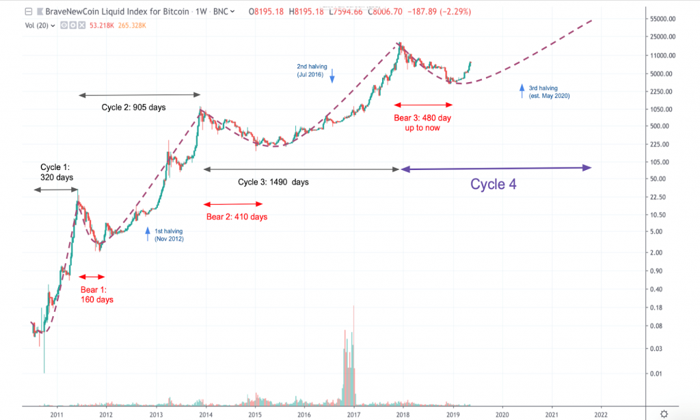Electronics tariff exemptions have become a significant topic of discussion amidst shifting U.S. tariff policies. Commerce Secretary Howard Lutnick recently indicated that the temporary reprieve on tariffs for products like smartphones and computers may soon come to an end. As the government prepares to implement new semiconductor tariffs aimed at bolstering domestic manufacturing, consumers and businesses alike are closely monitoring these developments. Understanding U.S. tariffs on electronics and their implications is vital for anyone involved in the tech industry. With these upcoming tariff policy updates, it is essential to stay informed to navigate the evolving landscape of import duties.
The landscape of electronics import duties is under scrutiny, particularly as U.S. officials signal impending changes. Tariffs on consumer gadgets like smartphones and computers have been temporarily lifted, but this exemption is likely to be short-lived. With a renewed focus on domestic production, specifically in the semiconductor sector, businesses and tech enthusiasts must prepare for the evolving regulatory environment. The anticipated adjustments in tariff strategies aim to reshape how products are manufactured and imported. Staying abreast of these tariff policy changes is crucial for understanding the future of electronic goods and their accessibility in the market.
Understanding U.S. Tariffs on Electronics
The landscape of U.S. tariffs on electronics has seen significant shifts, particularly with the recent updates made by the Commerce Department. Initially, key consumer electronics such as smartphones and computers enjoyed temporary exemptions from the newly imposed import duties. These changes come amidst broader efforts by the U.S. government to revitalize domestic manufacturing, particularly in semiconductor production, which is critical for many electronics today.
As the Trump administration’s exemptions appear to be only a temporary reprieve, businesses and consumers are left to navigate the implications of these tariff policies. The economy is still adjusting to the introduction of tariffs targeting specific electronics, with experts warning of potential price increases if these tariffs take full effect. Understanding the specific categories affected by these tariffs is essential for importers and manufacturers to strategize effectively.
The Future of Semiconductor Tariffs
Semiconductors, as the backbone of modern technology, are at the forefront of the upcoming tariff changes highlighted by Commerce Secretary Howard Lutnick. In his statements, he indicated that a new set of duties specifically focused on semiconductor products is anticipated within the next one to two months. This shift aims to bolster domestic production capabilities and lessen the reliance on foreign — particularly Asian — sources for critical tech components.
With these semiconductor tariffs on the horizon, industries reliant on these components, such as consumer electronics and automotive, should prepare for potential disruptions. The government’s push for domestic manufacturing of chips and related products signifies a broader strategic initiative aimed at ensuring U.S. competitiveness in technology and national security sectors.
Smartphone Import Tariffs and Their Impact
The imposition of new tariffs on smartphone imports is a pivotal aspect of the U.S. tariff policy updates. Although smartphones were included in the temporary exemptions announced earlier, these may not last long. The fate of these tariffs affects consumers and manufacturers alike, potentially leading to price hikes in the consumer market and affecting demand for these essential gadgets.
The implications of smartphone import tariffs extend beyond just higher prices. Businesses must adapt to these changes, considering the additional costs of conducting international trade under a restructured tariff regime. As the federal government aims to enhance national production of electronics, manufacturers might need to rethink their supply chains, focusing more on local partnerships to mitigate the financial impacts of tariffs.
Domestic Manufacturing and Tariff Policy
The overarching goal of the U.S. tariff policy updates is to stimulate domestic manufacturing across various sectors, most notably in electronics and semiconductors. By implementing targeted tariffs, the government hopes to create a more favorable environment for attracting investment in manufacturing technology within the U.S. This is seen as vital for achieving long-term economic independence and resilience against global supply chain disruptions.
Domestic manufacturing offers numerous advantages, including job creation and enhanced national security through localized production. As the focus shifts towards localizing semiconductor production, industries must adapt to new practices and technologies, ensuring that U.S. manufacturing can meet rising global demands while also adhering to tariff regulations.
National Security Implications of Tariff Updates
The recent tariff updates have introduced significant national security considerations, especially concerning the semiconductor industry. The targeted approach signifies the U.S. government’s recognition of the critical role that chips play not only in consumer electronics but also in strategic sectors such as defense and cybersecurity.
By prioritizing the domestic production of semiconductors, the government aims to mitigate risks associated with relying on foreign manufacturers, especially those in regions with geopolitical tensions. This proactive stance is intended to reinforce national security while fostering technological advancement within the U.S.
Challenges Facing U.S. Electronics Importers
Importers of electronics in the U.S. face a complex landscape as new tariffs are rolled out. The temporary exemptions granted recently can create confusion, and businesses need to stay updated on the evolving policies to avoid penalties and plan their import strategies accordingly. Understanding the specifics of tariff classifications and potential exemptions is crucial for cost management.
Moreover, the need for compliance with evolving tariff regulations adds layers of complexity to supply chain logistics. Importers must remain agile and adaptive, which may require investing in new processes or technologies to ensure they can efficiently navigate the anticipated changes in tariffs, especially for products like consumer electronics and semiconductors.
Economic Implications of Electronics Tariffs
The economic implications of electronics tariffs extend beyond immediate price changes; they can also significantly impact investment patterns within the technology sector. With the potential for increased production costs and market adjustments, businesses must evaluate their long-term strategies for ensuring competitiveness in a shifting global landscape.
As the industry adjusts to these tariffs, there is likely to be a ripple effect on consumer prices, innovation, and technology development. Companies might need to invest in new technologies or shift their operations to maintain profitability, which could ultimately reshape the market dynamics of U.S. electronics.
Reactions from the Electronics Industry
The electronics industry has voiced mixed reactions to the recent tariff announcements, with many stakeholders advocating for a more measured approach to tariff implementation. Concerns abound regarding the potential for increased manufacturing costs and the effect on consumer purchasing power. Many industry leaders urge the government to consider the negative ramifications on innovation and market growth.
Additionally, some representatives from the technology sector have called for a clearer, more transparent tariff policy that allows businesses to plan for the future. The industry is watching closely as these updates unfold, emphasizing the need for collaboration between policymakers and business leaders to ensure a balanced approach that supports economic growth.
Anticipating Future Developments in Tariff Policy
As the U.S. government moves forward with its tariff policies, stakeholders must remain vigilant regarding potential updates and their implications. With the Commerce Secretary’s recent comments on semiconductor tariffs, businesses should prepare for significant changes in the coming months. Ongoing communication with trade associations can provide valuable insights into future developments.
Moreover, staying connected with industry trends will help organizations anticipate how tariffs might affect their operations and market positioning. An ability to adapt to changing regulations is essential for navigating the complexities of international trade, particularly as new threshold policies come into play.
The Role of LSI in Understanding Tariff Implications
Latent Semantic Indexing (LSI) plays a vital role in unpacking the nuances of tariff policy and its impact on the electronics market. By identifying related terms and concepts, LSI allows businesses to develop a richer understanding of how tariffs, such as those on semiconductors and smartphones, interrelate with broader economic trends and consumer behavior.
Employing LSI techniques enables businesses to craft more effective communication strategies as they navigate the complexities introduced by new tariffs. This will help stakeholders communicate clearly about their positions and responses to tariff changes, ensuring that they can seize opportunities while mitigating potential risks in their respective industries.
Frequently Asked Questions
What are the implications of U.S. tariffs on electronics for consumers and businesses?
U.S. tariffs on electronics, such as smartphone import tariffs and duties on computers, can lead to increased prices for consumers and impact business costs. These tariffs are designed to promote domestic manufacturing by making imported goods more expensive, but their short-lived exemptions suggest a complex tariff policy dynamic.
How do semiconductor tariffs affect the electronics market?
Semiconductor tariffs are expected to be implemented soon, targeting crucial components for electronics. This change aims to encourage domestic manufacturing of semiconductors, reducing reliance on Asian suppliers and potentially affecting the pricing and availability of electronic devices.
Are there any permanent tariff exemptions for electronics in the U.S.?
Currently, the exemptions for products like smartphones and computers from recent U.S. tariffs on electronics are temporary. As tariff policy updates unfold, consumers and manufacturers should stay informed about the possibility of future exemptions or changes that may affect their purchases.
What measures is the U.S. government taking to promote domestic manufacturing of electronics?
The U.S. government is focusing on enhancing domestic manufacturing of electronics through targeted tariffs on semiconductors and other key components. These initiatives aim to reduce dependence on international production, particularly from Asia, and strengthen national security in critical industries.
When will the semiconductor-specific tariffs be implemented?
Commerce Secretary Howard Lutnick has indicated that new tariffs focused on semiconductors are expected to be introduced within one to two months. This timing will be crucial for businesses and manufacturers in the electronics sector as they prepare for potential changes in costs and supply chain dynamics.
How can manufacturers prepare for upcoming tariff policy updates on electronics?
Manufacturers should closely monitor U.S. tariff policy updates and evaluate their supply chains. Engaging with local suppliers, reassessing product pricing strategies, and considering adjustments to manufacturing locations can help mitigate the impact of future tariffs and ensure compliance with new policies.
| Key Points | Details |
|---|---|
| Temporary Tariff Exemptions | Smartphones, computers, and electronics currently exempt from tariffs but this is expected to change. |
| Upcoming Semiconductor Tariffs | Commerce Secretary Howard Lutnick indicates new tariffs on semiconductors will be introduced within 1 to 2 months. |
| Goal of Tariff Changes | The U.S. aims to reduce reliance on Asia for electronics and boost domestic semiconductor production. |
| Impact on Markets | Market reacted to announcement; Bitcoin dropped 1% before recovering. |
| National Security Focus | Tariffs are being directed towards industries deemed crucial for national security, such as semiconductors and pharmaceuticals. |
Summary
Electronics tariff exemptions in the United States are currently in place but are expected to be temporary. As stated by Commerce Secretary Howard Lutnick, these exemptions for products such as smartphones and computers will be replaced by targeted tariffs aimed at semiconductors within the next month or two. This policy shift reflects a strategic move by the U.S. government to bolster domestic manufacturing and decrease reliance on Asian imports in critical technology sectors.
The recent announcement regarding electronics tariff exemptions has sent ripples through the technology sector, as U.S. tariffs on electronics are poised to undergo significant changes. Consumers and manufacturers alike are anxiously awaiting updates on smartphone import tariffs and how they will impact prices on retail shelves. According to Commerce Secretary Howard Lutnick, these exemptions are only a temporary reprieve, as new semiconductor tariffs are expected within the coming months. The administration’s emphasis on bolstering domestic manufacturing aims to reduce dependency on Asian industries, marking a pivotal shift in U.S. trade policy. As the landscape of tariff policy updates unfolds, stakeholders must remain informed to navigate potential implications on the tech market.
In the evolving landscape of digital technology, recent discussions surrounding exemptions from import duties on electronics are crucial for understanding the dynamics of trade. These temporary reprieves from tariffs on gadgets such as smartphones and laptops highlight a significant pivot in the government’s approach to semiconductor trade and domestic production. With an eye towards self-sufficiency, the U.S. aims to lessen its reliance on overseas manufacturing, particularly from Asia. The imminent introduction of targeted tariffs underscores a broader strategy to secure national interests within vital sectors like technology. As developments unfold, staying updated on these legislative changes will be essential for both consumers and industry players.















